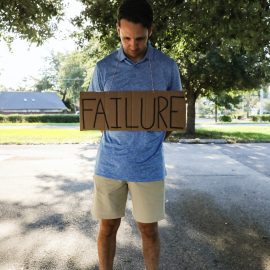

This article is an excerpt from the Shortform book guide to "The Essential Drucker" by Peter Drucker. Shortform has the world's best summaries and analyses of books you should be reading.
Like this article? Sign up for a free trial here.
What’s managerial decision-making? How do you know if you’re making the right decision for the organization?
It’s management’s role to make decisions based on issues affecting the whole organization. In The Essential Drucker, Peter Drucker asserts that at the executive level, managers should devote their time to making strategic, broad-ranging decisions, not solving low-level problems.
Continue reading to learn what it takes to make managerial decisions.
Making Decisions
The managerial decision-making path that Drucker lays out involves establishing the nature of the issue being addressed, determining the minimum requirements that a solution needs to meet, devising an action plan to implement your decision, and collecting feedback to determine whether your solution was correct.
Drucker writes that the first step in making a business decision is to determine whether the problem at hand is an isolated occurrence (such as property damage caused by a natural disaster) or a systemic issue (such as damage caused by lack of maintenance). Isolated problems can be solved individually, but systemic problems require policy decisions. However, managers ought to keep in mind that isolated problems are extremely rare, and what may seem like a one-of-a-kind problem could be a warning sign of a new systemic issue. It’s important to figure out the underlying nature of a problem before deciding on a course of action.
| Jeff Bezos’s Perspective on Making Decisions In Invent and Wander, Amazon founder Jeff Bezos offers a different way of classifying business decisions than Drucker does. Bezos argues that the two main categories of decisions are those that can be rolled back if they prove unsuccessful and those that can’t be undone once you enact them. Decisions that aren’t necessarily permanent—such as offering a new seasonal discount—can be made with a minimum of fuss, while decisions that will stick with you forever—such as starting a wide-ranging customer loyalty program like Bezos’s Amazon Prime—must only be made after careful consideration. Bezos argues that the mistake many big companies make is to view all decisions as potentially permanent and then get bogged down in a wasteful, time-consuming decision-making process. In Drucker’s terms, this would be equivalent to viewing every problem as systemic, requiring major policy decisions. |
The next step is to determine what bare minimum requirements your decision must meet to ensure a successful result. Drucker says not to try this on your own—instead, you should seek input from a variety of others within your organization or outside it. When seeking advice, you want different opinions. Especially for tricky problems, you’ll want a selection of alternatives, not consensus from colleagues who are afraid to ruffle each other’s feathers. Encourage debate if you have to, avoiding the assumption that there’s only one viable solution. When there’s disagreement on an issue, Drucker suggests figuring out why people disagree. Answering that will give you further insight into what decision you should make.
(Shortform note: In Principles: Life and Work, hedge fund manager Ray Dalio points out an aspect of debate that Drucker doesn’t—the clash of egos and emotion that goes with it. Inside each person, there’s a divide between their rational self and their emotional subconscious, both of which come with their own agenda. To overcome your emotional ego and that of whomever you’re trying to engage in a productive debate, you have to find the balance between being assertive and open-minded. It’s best to ask questions instead of arguing, and to focus on the substance of the discussion rather than letting it become heated and disrespectful.)
Implementing Decisions
In the end, you’ll have to make a decision that won’t please everyone you consulted. Some managers may be tempted to delay decision-making as they wait for more data, but often that’s an excuse to avoid discomfort. Drucker says that if you feel hesitant, take some time to think it through—two or three days at most—then when you settle on a decision, follow through with a plan of action. This includes identifying who needs to know about the decision, who is going to carry it out, and what resources they’ll need to enact it. The manager and everyone involved will have to commit to carry out the decision, or else it’ll carry no weight.
(Shortform note: In practice, creating an action plan to carry out a business decision is often more complex than Drucker suggests. This is because individual decisions don’t exist in isolation. In Getting Things Done, David Allen explains that any plan of action is composed of multiple steps and decisions to be made. Therefore, organizing a project into its components is a vital step before taking action, as is deciding what every component action will be and which team members are responsible for each. The implementation steps Drucker describes won’t be carried out once, but multiple times for each major business decision that you make.)
Drucker says that no matter how confident you are in your decisions, at some level they’re always going to be judgment calls. Part of the action plan to implement decisions has to include feedback measures to determine if the decision was correct. Every decision is based on opinions that should be treated as hypotheses and tested. There are various measures for collecting data in any given situation, but Drucker insists there’s no substitute for checking the results of a decision yourself. If this means getting out of the office to see how management decisions are carried out on the organization’s front lines, so much the better.
(Shortform note: Though Drucker only covers why managers need feedback, it’s actually an invaluable tool for everyone in an organization. The authors of The Phoenix Project argue that fast, corrective feedback is a fundamental pillar of a successful system, and it has to be accessible at every step of any process. For feedback to be fast and effective, workers shouldn’t have to wait for information to be filtered by management—an organization has to set up a system where knowledge workers and front-line employees can use real-time data to guide their performance and improve the system to keep up with their customers’ needs.)

———End of Preview———
Like what you just read? Read the rest of the world's best book summary and analysis of Peter Drucker's "The Essential Drucker" at Shortform.
Here's what you'll find in our full The Essential Drucker summary:
- The key chapters from Peter F. Drucker's most respected works
- A look at the companies that have successfully implemented Drucker's concepts
- Experts' ideas that contrast with those Drucker presents






